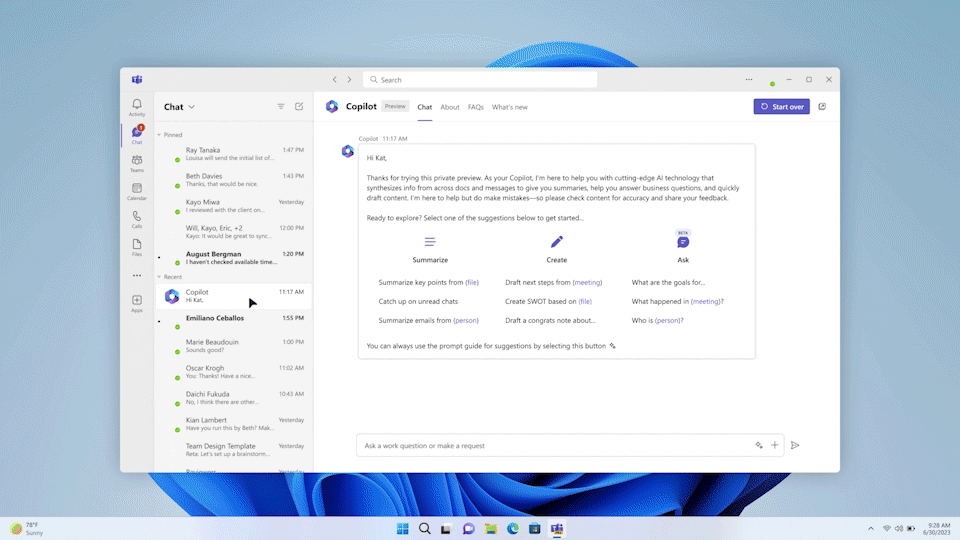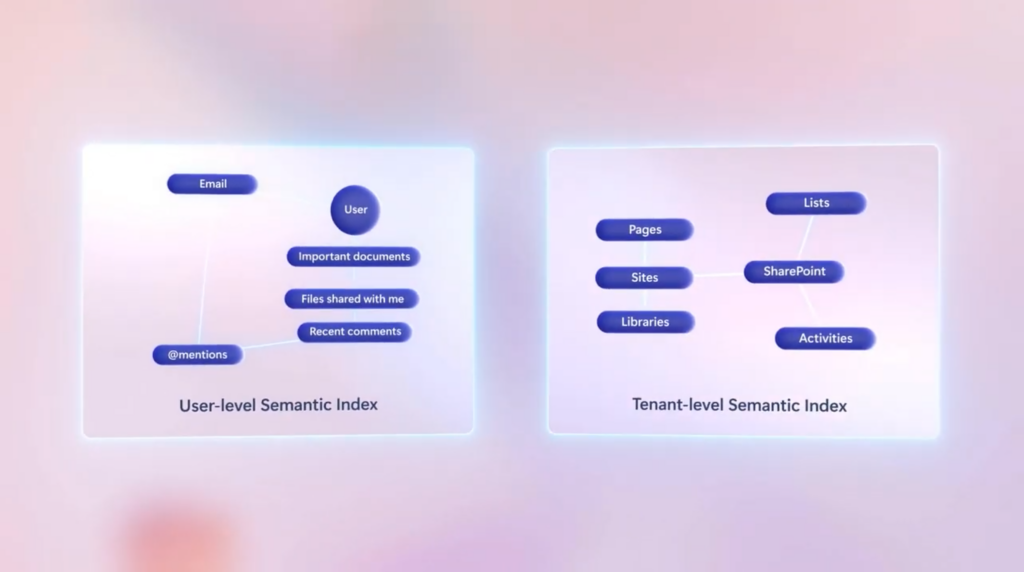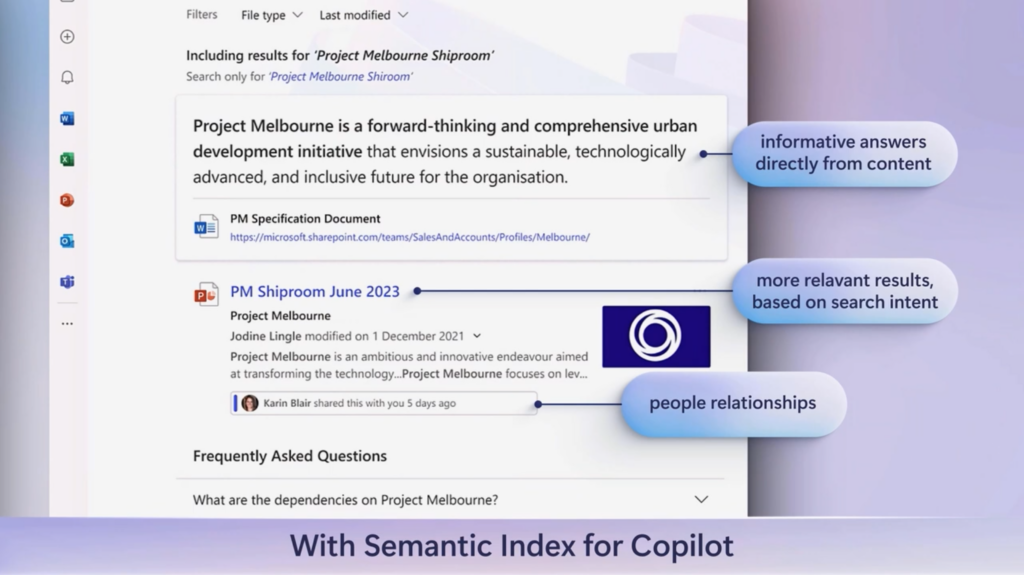Microsoft and AI: What Is the Copilot Semantic Index and How Does It Work?
Microsoft recently announced that it is taking a significant step forward by enhancing its search indexing capabilities with AI technology in the form of Copilot Semantic Index, which is part of Copilot for Microsoft 365. A semantic index uses vectorized indices to build a conceptual map of data by linking it together in meaningful ways, much like the human brain does. It uses information such as keywords and personalization, and social matching capabilities that are already built into Microsoft 365 to make connections between separate pieces of information.
Using these connections, a semantic index improves how businesses interact with and leverage their data, offering a more intuitive, efficient, and effective way to navigate through the vast amounts of information stored within corporate environments.
In this article, I’ll look in more detail at how semantic indexing works and the potential benefits for organizations.
The challenge with current indexing technologies
Traditional indexing methods, while useful, often fall short when it comes to understanding the context and conceptual connections between different data points. Microsoft 365’s existing index is no exception. Despite its capability to organize and make data searchable, it occasionally struggles with delivering the precision and relevancy users need. The introduction of the Copilot Semantic Index aims to address these limitations by providing a more refined and human-like approach to data association and retrieval.
What is the Copilot Semantic Index? Could it be a game-changer for data search
The Copilot Semantic Index is not just an incremental update; it represents a paradigm shift in how data is indexed and searched. A semantic index uses vectorized indices to move search beyond the limitations of traditional keyword-based searches, enabling a conceptual understanding of the content. The Copilot Semantic Index allows Microsoft 365 to grasp the essence of the data, facilitating searches that are more aligned with human thought processes and natural language queries.

How does a vectorized index work?
Vectorized indexing works by storing data points in multidimensional spaces, where items that are related to each other are clustered together. This enables Microsoft 365 to handle a broader range of queries with better accuracy and relevancy. The Copilot Semantic Index leverages keywords, personalization, and social matching capabilities already found in Microsoft 365, but it extends these with the ability to understand the conceptual links between data points. The result is a significantly enhanced ability to find not just any data, but the right data. And to surface other relevant data when users perform searches.

Benefits of semantic indexing for businesses
The Copilot Semantic Index promises to change the way companies access and use their data. With its advanced AI-driven approach, businesses can expect:
- Improved search efficiency: Faster and more accurate retrieval of relevant information, reducing the time employees spend searching for data.
- Enhanced data discovery: Ability to uncover hidden insights and connections within the data that were previously difficult or impossible to find.
- Personalized user experiences: Searches that understand and adapt to individual user preferences and contexts, delivering more tailored results.
- Increased productivity: By enabling quicker access to the needed information, employees can focus more on analysis and decision-making rather than data hunting.

Looking ahead: the future of data management with Microsoft 365
One of the advantages of having all of your data in Microsoft 365 is it can index everything. Today’s index has its issues but most of the time it does help you to get a little closer to finding what you’re looking for. You need to enable Copilot for Microsoft 365 before you can use the Semantic Index. The Copilot Semantic Index uses the power of AI to improve data management practices and the results we get from search. It promises to provide businesses with a smarter, more efficient, and personalized way to navigate the growing sea of data.
As semantic indexing technology continues to develop and integrate into Copilot for Microsoft 365, the potential for innovation and enhanced data utilization should help organizations further improve productivity beyond what the generative AI features built-in to Copilot already provide.



